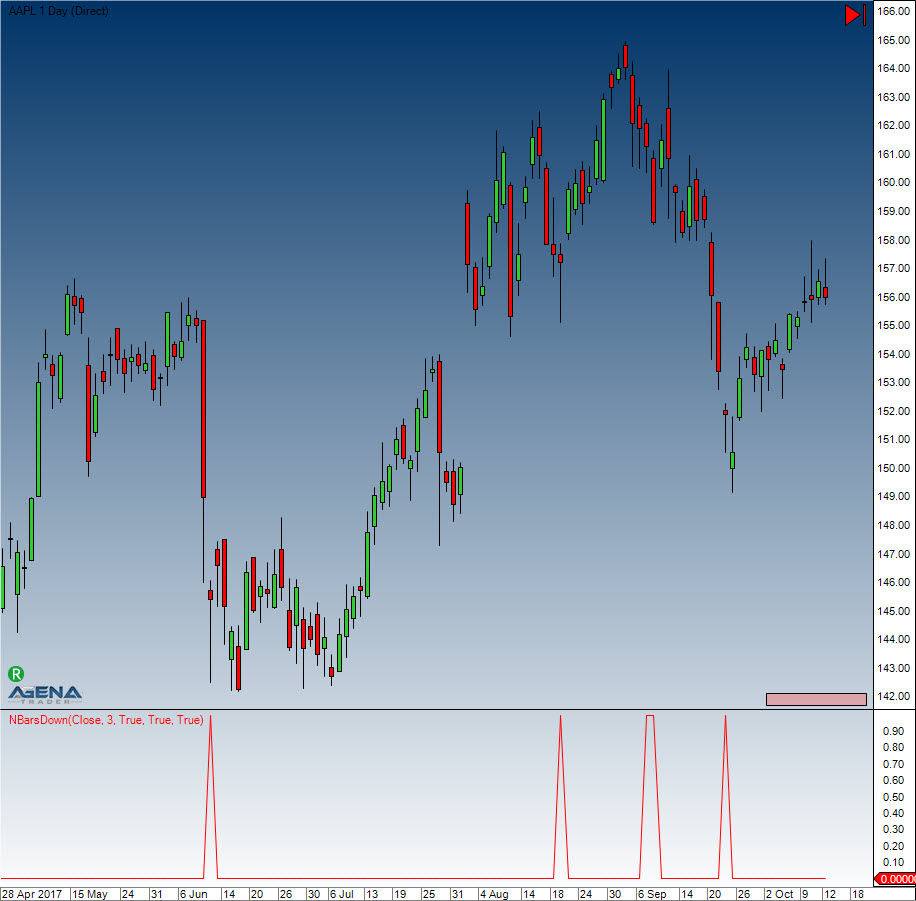nBarsDown
Description
The nBarsDown indicator looks for a specified number of falling closing prices.
The following conditions can also be included in the search: - Constantly falling bars - Constantly falling highs - Constantly falling lows
Usage
NBarsDown(int barCount, bool BarDown, bool lowerHigh, bool lowerLow)
NBarsDown(IDataSeries inSeries, int barCount, bool BarDown, bool lowerHigh, bool lowerLow)
NBarsDown(int barCount, bool BarDown, bool lowerHigh, bool lowerLow)[int barsAgo]
NBarsDown(IDataSeries inSeries, bool barCount, int BarDown, bool lowerHigh, bool lowerLow)[int barsAgo]Return value
double
When using this method with an index (e.g. NBarsDown(...)[int barsAgo] ), the value of the indicator will be issued for the referenced bar.
1 – The condition applies 0 – The condition does not apply
Parameters
inSeries Input data series for the indicator
barCount Required number of successively lower closing prices
barDown Additional condition (true): each close must be lower than the open
lowerHigh Additional condition (true): continuously falling highs
lowerLow Additional condition (true); continuously falling lows
Visualization

Example
Last updated